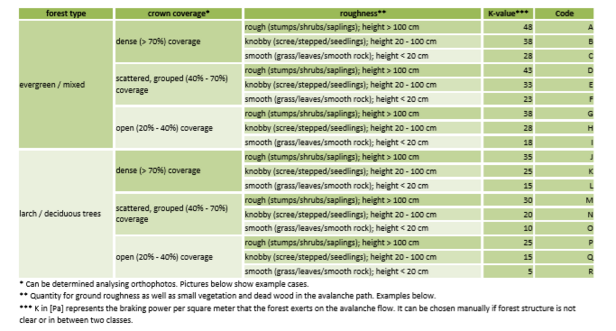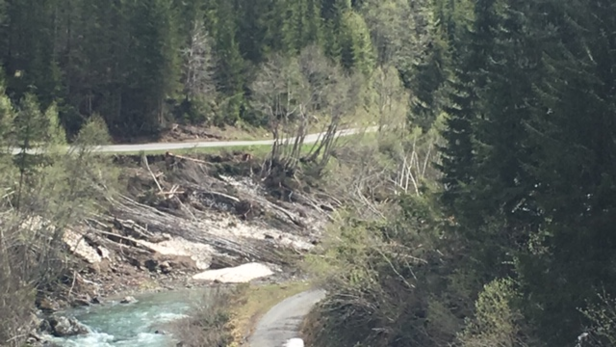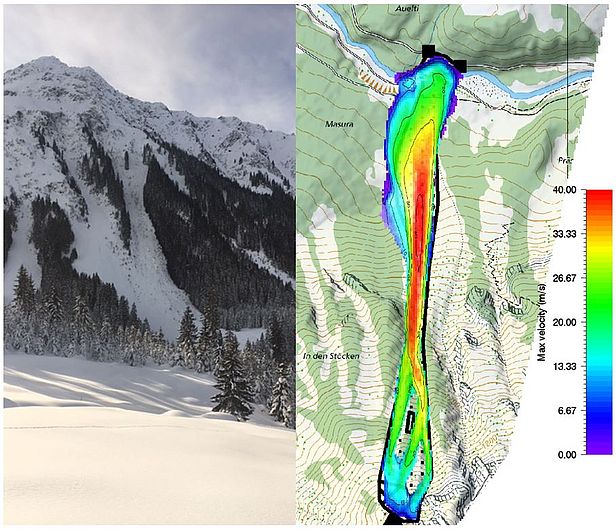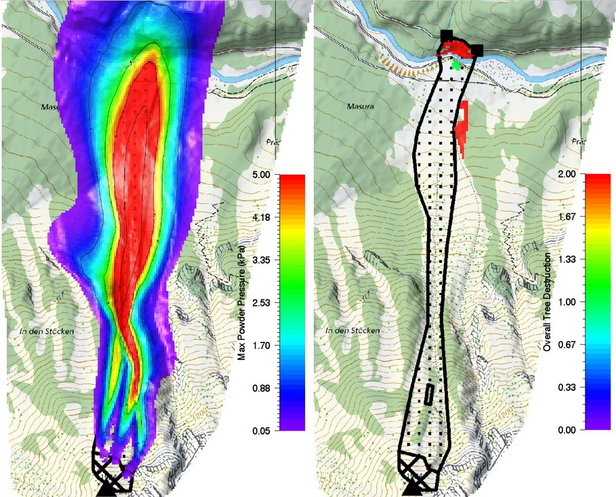It is possible in RAMMS::EXT to introduce forest shape files describing forests of different types and age (Fig. 1). The height of the tree with the diameter at breast height is then used to compare the calculated stress with the minimum breaking stress to determine which area of the shape file is destroyed by the avalanche. Comparing predicted and actual destroyed forest is an ideal way to calibrate the return period of a specific avalanche, since the age of the trees is known. Trees can be destroyed by the avalanche core, or the powder cloud. Core pressures are higher, but because of they impact trees at lower levels do not lead to large overturning moments. Conversely, the lower magnitude powder cloud load extends over the entire height of the tree, leading to large overturning moments.

The forest module applies the detrainment method developed by Feistl et al. (2014, 2015). Avalanche mass is stopped behind dense clusters of trees, leading to a loss of avalanche momentum. If the trees break from the avalanche impact pressure, the braking effect of the trees is removed from the calculation.


